
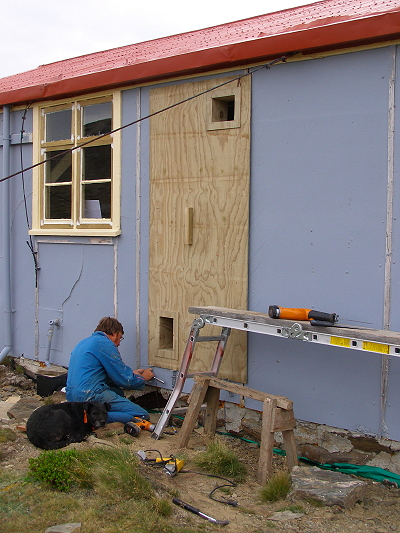
Home Access Restoration Progress Contributors Trustees 'Friends' History Wonders
In February
2008 an experimental heating device was installed on the north-facing
kitchen wall of Big Hut. Hut. Bruce Mason prefabricated then installed
a
solar-heated thermosiphoning air panel (TAP).
The
‘heart’ of the panel is a black colour-steel ‘heat
collector’
behind an external double polycarbonate sheet. High temperatures are
generated in this sealed compartment. Heat radiates from the steel into
another air space next to the hut wall with vents top and bottom
through to the kitchen.
By convection, warm
air rising out of the top vent draws in cold air at floor level. A damper in the
bottom vent prevents cold
air back-flow.
Nothing needs to be done to operate the panel – it operates
itself.
The panel is a North American design. It is billed as being effective in snowy environments through reflected radiation off the snow, additional to direct solar input. This has proved to be correct at Big Hut. It has significantly raised average winter noon full-sunshine temperatures in the kitchen (when the doors and servery are closed) from approximately 5 degrees to at least 12 degrees Celsius.
A thermosiphon starts within minutes of the morning sun striking the panel even at an acute angle of 85 degrees - this is considerably better that the designers' estimate of needing to be within 30 degrees. It has been found that the only conditions it does not operate is when there is complete obscurity of the sun, for instance when snowing heavily and/or when enveloped in heavy cloud. If there is partially obscured sunshine the TAP still works, to a lesser degree. Thermometers in the top and bottom air vents can record temperatures of 3-5 degrees C at floor level but 30 degrees C or more at the top vent. A continuous, hardly discernible, air flow warms the kitchen.
With improved insulation (the walls and floor are still be be done), and more panels, winter day-time temperatures throughout much of the hut should be raised from - 5 or below to + 5 or more degrees C.
The materials for this TAP cost $700. If further panels for the north and west walls are constructed (at least 5 more), the unit cost could be reduced. Heat-transfer ducting and fans may be needed to distribute warm air between rooms.
The TAP appears to be a novel concept in New Zealand.


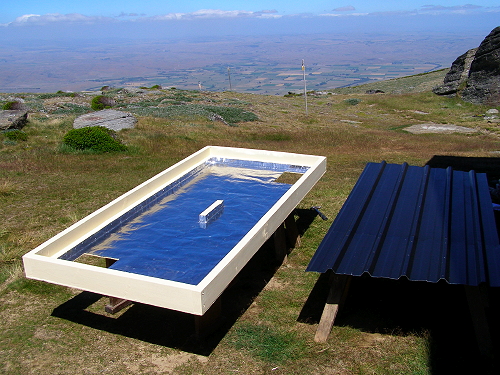
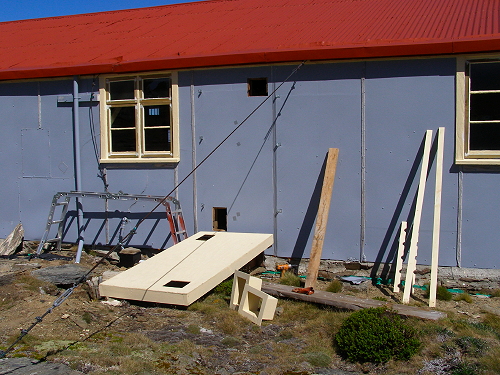
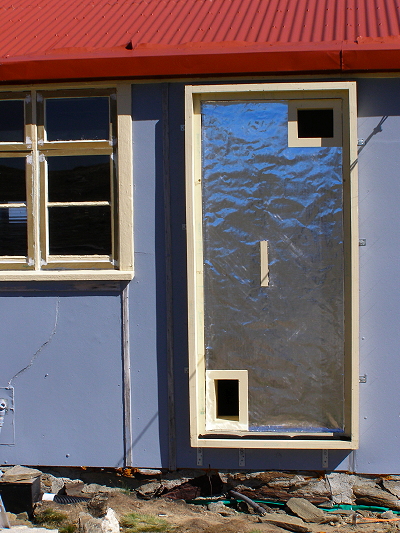
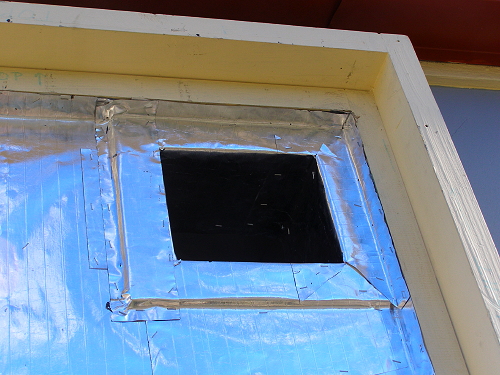
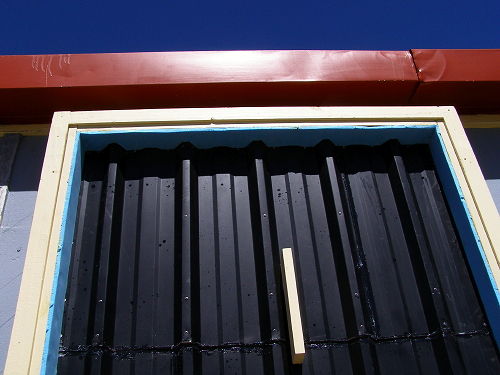
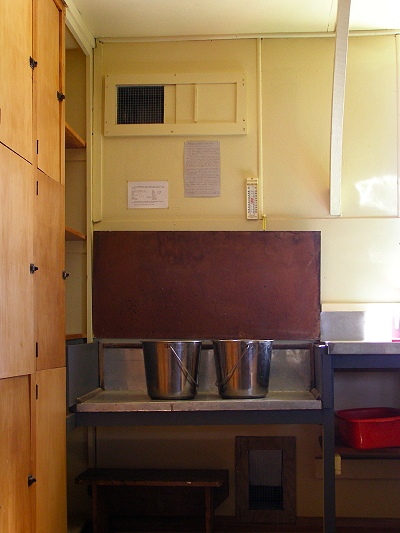
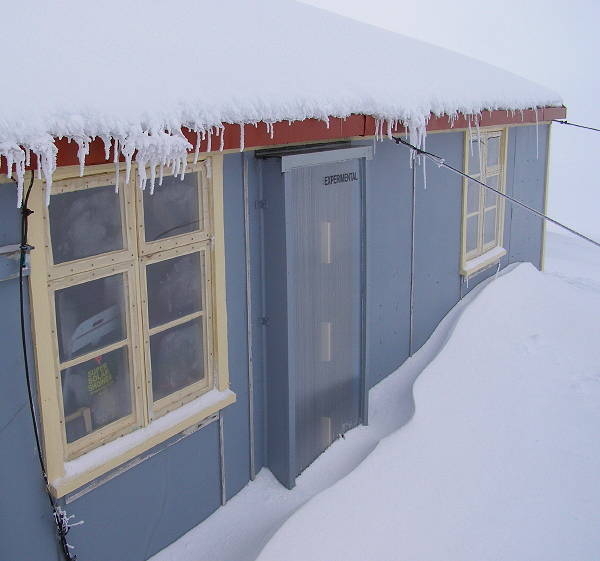
Rock and Pillar Hut Trust Inc., R D 1 Omakau 9376, Central Otago New Zealand